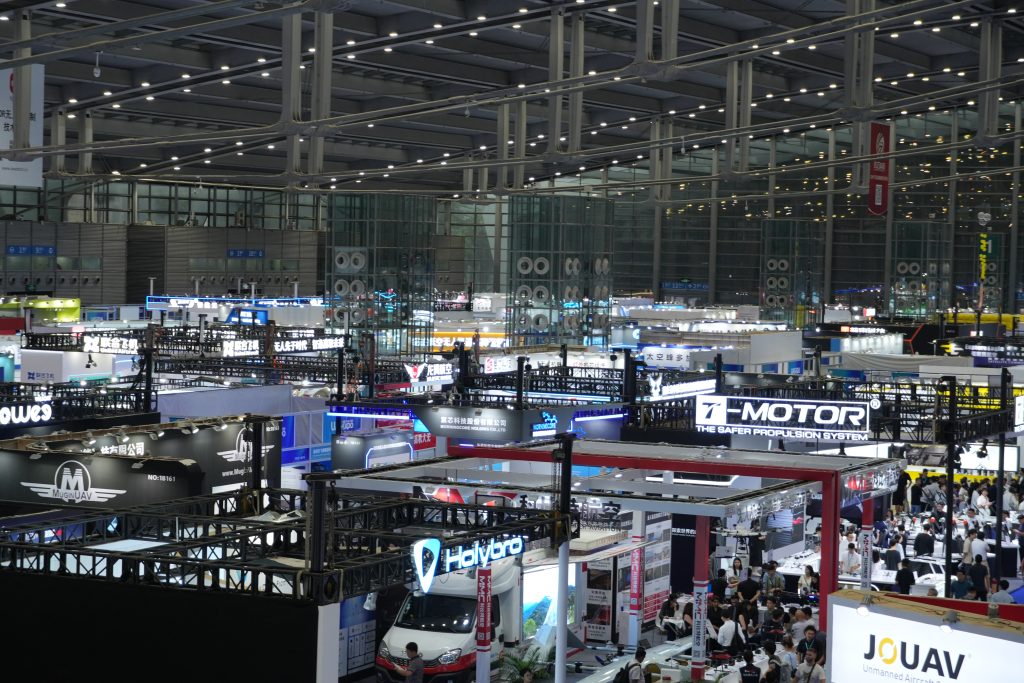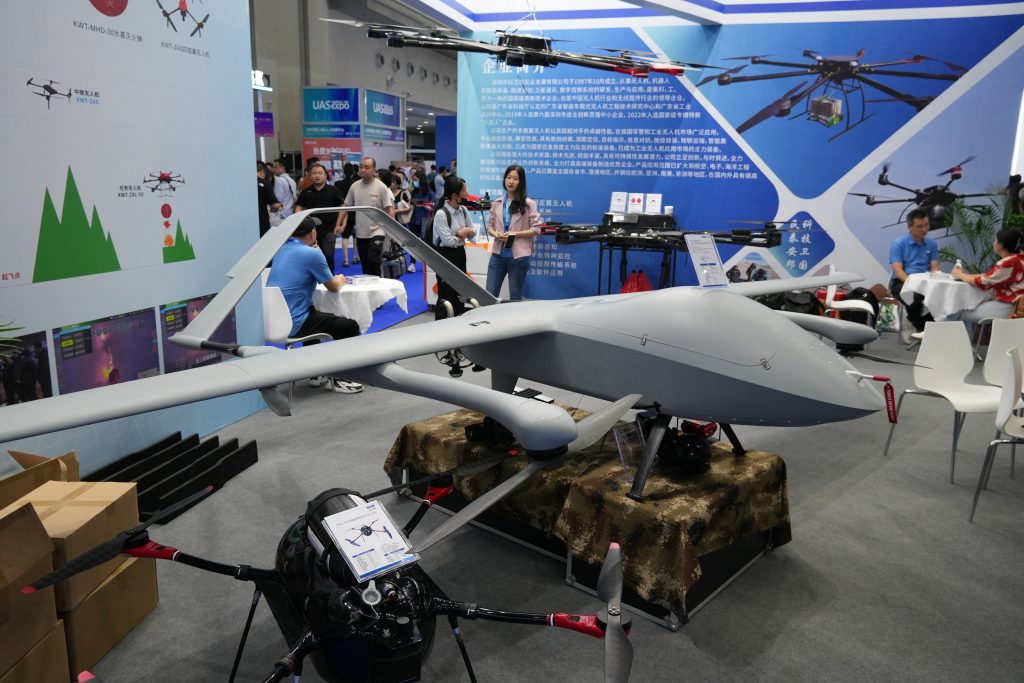After experiencing a brief period of excitement followed by a cool-down several years ago, the “low-altitude economy” and eVTOL (electric Vertical Take-Off and Landing) have made a significant breakthrough this year.
On the policy front, efforts to improve infrastructure related to the low-altitude economy have been ongoing. For instance, on May 22, the China Civil Airports Association released the group standard “Technical Requirements for eVTOL Take-off and Landing Sites.” This standard, which officially began its formulation at the end of 2023, is the first technical specification in China aimed at eVTOL take-off and landing sites. Local governments are also setting goals and plans for developing the low-altitude economy.
For OEMs, advancing airworthiness certification is the core issue at present. Additionally, there has been an increase in communication efforts targeting overseas markets.

According to a comprehensive observation by a 21st Century Business Herald reporter, since the beginning of this year, conducting demonstration flights in overseas markets such as the Middle East, Southeast Asia, and Latin America has become a new trend among mainstream eVTOL manufacturers. Unlike industries like domestic new energy vehicles and smartphones, which establish a commercial presence domestically before expanding overseas, the eVTOL’s path to international markets appears to be at a much earlier stage.
This is partly because eVTOL aircraft have “civil aviation” attributes, requiring earlier engagement with local markets for approval and verification during the overseas expansion process. It also indicates that global markets are welcoming eVTOL technology.
Of course, policies and market enthusiasm are external driving factors, but industry practitioners frequently emphasize the importance of maintaining a calm and respectful approach to aviation while working within the industry.
Boosting the Supply Chain in eVTOL Industry
A common perspective in the current domestic eVTOL industry is that one of the challenges faced is the short-term limitation on range imposed by the current stage of battery cell development. To address this, domestic eVTOL manufacturers have the options of either fully developing their own technology or advancing through industrial chain collaboration.
Jiang Jun, Founding Partner and CMO of TCab Tech, told the 21st Century Business Herald, “Electrification has simplified control and structural technology, making the implementation of eVTOLs easier.”
He continued, stating that after thorough market research and evaluation, his company believes that tiltrotor technology better meets the requirements for cost, speed, and payload in manned aerial transportation. It is suitable for scenarios such as air travel in large scenic areas and urban circles. Shide Technology focuses solely on the development of manned eVTOLs. Although there was no prior technical foundation in China, they can solve this through engineering technology decomposition.
Regarding the current challenges in the industry chain, such as battery cell energy density and high power-to-weight ratio motors, Jiang Jun explained that their goal is not to pursue the ultimate energy density of battery cells but to use safe and reliable mature solutions, seeking a balance among energy density, safety, and cycle life.
“While electric vehicle motors require high speed, eVTOL motors need low speed, so there are significant differences. Considering safety and regulatory approvals, electric vehicle motor technology is difficult to reuse in the eVTOL industry. There has been a ‘chicken or egg’ problem in the domestic motor industry, as no one believed eVTOL would arrive so soon, leading to domestic motor development lagging far behind overseas. Currently, overseas motors are expensive, and the more motors used, the higher the overall cost.”

He pointed out that as the industry heats up, it is expected that within the next 3 to 5 years, there will be relatively safe and reliable domestically produced high-power aviation motors, significantly lowering costs. Overseas motor prices will also decrease noticeably with mass production, greatly reducing the commercial cost of eVTOLs.
Observing the development progress of related eVTOL companies both internationally and domestically, it seems relatively close. Jiang Jun stated that thanks to recent years of accumulation in aviation technology and new energy technology in China, the foundation for developing eVTOLs is more solid. Coupled with the diligence of Chinese engineers, “Today, we can say that the development of eVTOL technology in China and abroad is neck and neck, and China has the opportunity to surpass overseas in the future.”
Commercialization Advancement
Beyond the supply chain, the active promotion of airworthiness certification by manufacturers is a crucial step to explore faster commercialization.
In March 2024, Autoflight launched the cargo version V2000CG, currently the world’s first ton-class eVTOL to receive a TC type certificate, using an unmanned solution. Subsequent PC and AC certifications are expected to be obtained in the third and fourth quarters.
Autoflight’s Senior Vice President Xie Jia introduced that from 2023 to early 2024, Autoflight conducted over 10,000 kilometers of test flights under different temperature, humidity, and altitude conditions in Kunshan, northern Jiangsu, Gansu, Qinghai, and Inner Mongolia, aiming to verify the safety and reliability of 2-ton-class eVTOL aircraft and expand their applicability.
In April this year, Autoflight’s manned eVTOL electric vertical take-off and landing aircraft V2000EM (Shengshi Long) applied for a type certificate (TC). Xie Jia stated that the plan is to obtain TC certification for manned eVTOLs by 2026.
With the normalization of logistics routes, continuous accumulation of flight safety records and experience will simultaneously promote the airworthiness certification of manned aircraft. “The mutual promotion of the two types of products and directions can serve as early market education, making it more natural when people start accepting and embracing the reality of eVTOLs,” he continued, hoping to promote commercialization landing this year and next.
However, the global airworthiness certification standards for eVTOL aircraft are not yet unified, and each case is handled on a “case-by-case” basis.
Xie Jia explained to the 21st Century Business Herald, “The ‘case-by-case’ principle exists because there are no unified standards yet, and each company advances airworthiness under special conditions.” He continued, expecting that a set of industry-wide unified standards could be summarized after multiple eVTOL manufacturers obtain the three airworthiness certificates. “However, this does not affect the current airworthiness certification progress, as ‘case-by-case’ is also progressing according to formal airworthiness standard procedures.”
It is reported that Autoflight has established a dedicated internal team for airworthiness certification, with members mainly from COMAC, CAAC East China Regional Administration, Airbus, etc., to strengthen the company’s systematic airworthiness certification preparation work.
Jiang Jun also told reporters that Shide Technology is actively engaging with airworthiness certification authorities to ensure that their eVTOLs meet all necessary safety and regulatory standards. He emphasized the importance of this process for the credibility and commercial viability of eVTOL technology.
“We have created a comprehensive road map for certification that involves close collaboration with regulatory bodies, rigorous testing, and continuous feedback loops. This ensures that every aspect of our eVTOLs, from design to production, adheres to the highest standards of safety and reliability,” he said.
Public Perception and Market Education
Another critical aspect of eVTOL commercialization is shaping public perception and educating the market about the safety and benefits of these new transportation technologies. As Jiang Jun noted, public acceptance is crucial for the widespread adoption of eVTOLs.
“People need to feel confident about flying in an eVTOL, just as they do with traditional aircraft. This means addressing any concerns about safety, reliability, and the overall user experience. We are working on comprehensive communication strategies, including demonstration flights, public exhibitions, and partnerships with local governments and businesses, to build trust and enthusiasm for eVTOLs,” he explained.
Infrastructure Development
Beyond airworthiness and public perception, the development of infrastructure to support eVTOL operations is another vital area. This includes the creation of vertiports, charging stations, and maintenance facilities.
Jiang Jun pointed out that integrating eVTOLs into existing urban and regional transport networks requires significant planning and investment. “We are collaborating with urban planners, transport authorities, and private sector partners to develop the necessary infrastructure. This includes identifying optimal locations for vertiports and ensuring that they are equipped with the necessary technology for efficient operations.”
Future Prospects
Looking ahead, both Jiang Jun and Xie Jia are optimistic about the future of eVTOL technology. They believe that with continued advancements in battery technology, motor efficiency, and regulatory frameworks, eVTOLs will become a mainstream mode of transportation.
“Within the next decade, we envision a world where eVTOLs are a common sight in the skies, providing a fast, efficient, and environmentally friendly alternative to traditional transportation methods. This will not only transform how we travel but also open up new possibilities for urban development and connectivity,” said Jiang Jun.
Xie Jia echoed this sentiment, noting that the rapid progress in the eVTOL industry is a testament to the innovation and determination of the companies involved. “The journey is challenging, but the potential rewards are immense. We are on the brink of a new era in aviation, and it’s an exciting time to be part of this transformative industry.”
In conclusion, the domestic eVTOL industry is making significant strides in overcoming current challenges through technological innovation, strategic collaborations, and proactive engagement with regulatory bodies. With a clear focus on safety, reliability, and public acceptance, the path to commercialization looks promising. As infrastructure develops and public trust grows, eVTOLs are set to revolutionize the future of transportation。
References:
https://m.21jingji.com/article/20240529/5a928ba62fe0e77fe3aecc975cf3857e.html
All photos are taken by eVTOL Asia and are protected by copyright. All rights reserved. Commercial and noncommercial usage of these photos is not allowed without explicit permission.
Leave a Reply